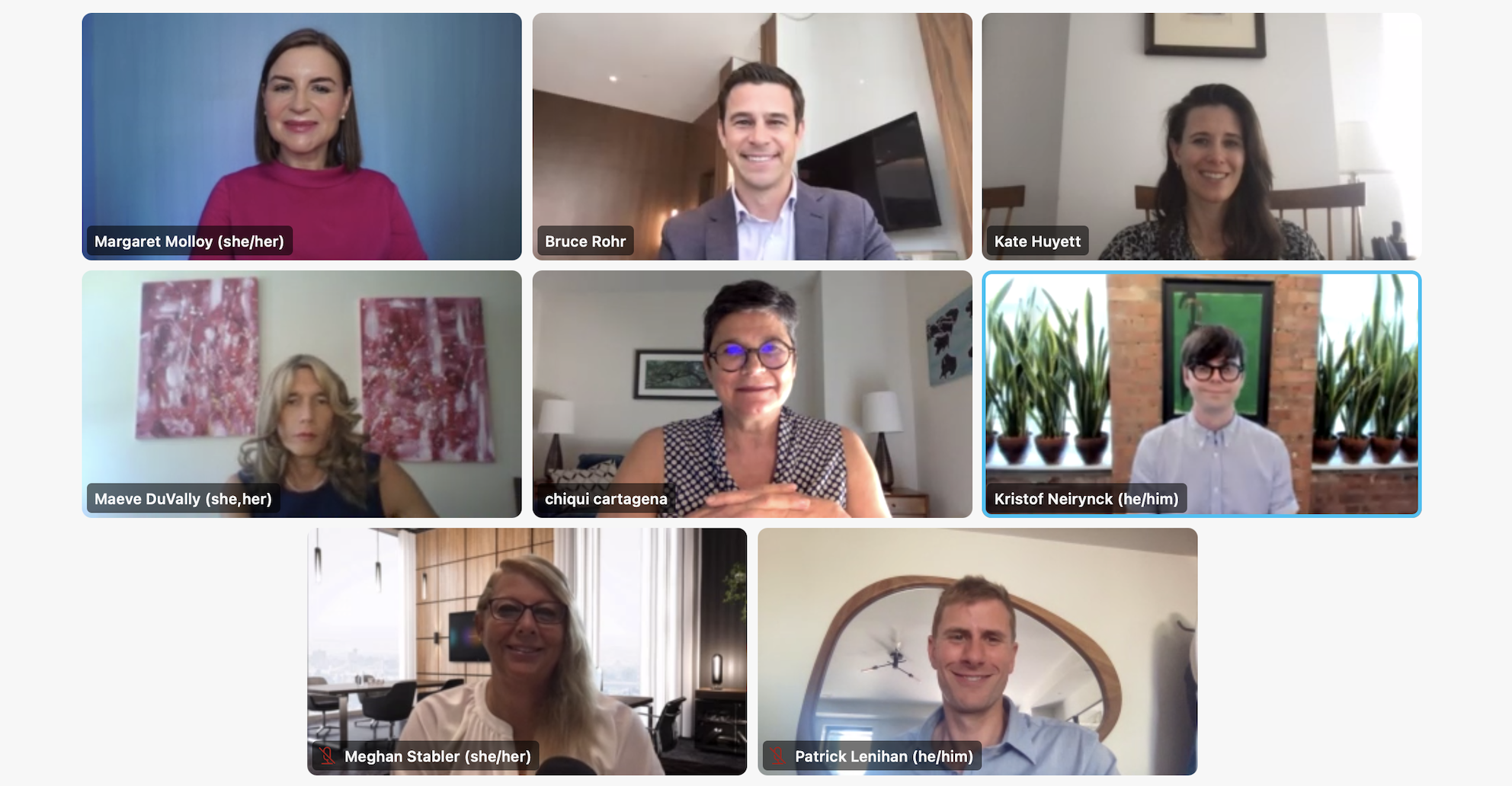There is palpable joy with the return of many in-person Pride celebrations that were canceled due to Covid. But at this year’s “CMO Panel: Pride and Inclusive Storytelling,” we were convening at a time of heightened political and cultural polarization. Given this backdrop, our annual celebration was possibly more important than ever. In the U.S., for example, we are witnessing an unprecedented number of bills before lawmakers targeting LGBTQ+ people.
As we explored this landscape and the experiences and perspectives of our seven LGBTQ+ marketing and communications leaders, we discussed such questions as, “What is the role of brands during Pride Month? Should brands express allyship with the community? And, if so, how?”
In closing, I asked our panelists, “What is your commitment to inclusive storytelling, and how will you measure success?” Here’s what they had to say.

Our commitment to inclusive storytelling is to always thread it through the lens of mission, and make sure that we’re inclusive—particularly in the places where there’s a big intersectionality with homelessness, which is at the heart of what we do. In terms of how we measure success, what we look at quite closely is the awareness people have of our mission. And if we’re doing a good job talking about issues that intersect with our mission, the awareness of our mission will continue to increase.
—Kate Huyett (she/her), CMO, Bombas
We are inherently focused on telling diverse stories across the LGBTQIA+ alphabet. It’s crucial for us to not stop there and to focus on making sure we’re telling stories across racial lines, across class lines, across national lines. We’re a global brand. And things look very different in India versus Indonesia versus Brazil versus the U.S. So, thinking as holistically and inclusively as we possibly can, it’s not only a commitment—it’s the core to who we are and an absolute business necessity. The way we’re going to know we’re doing well is to see our numbers continue to grow and users continue to come to us and feel increasingly safer, secure, and able to connect with the people that they are trying to connect with via Grindr.
—Patrick Lenihan (he/him), VP, Head of Communications, Grindr
This isn’t just an issue an LGBTQ+ issue, it’s something that we think about across all diverse underrepresented groups. And I talked a little bit earlier about how good storytelling yields identification. And if people identify with your story, they’re going to give you feedback. So, I don’t have a good metric to throw out there. But what really shows that you did a good job is if you get feedback from people internally, and you get feedback from people externally as well.
—Maeve DuVally (she/her), Managing Director, Corporate Communications, Goldman Sachs
For me, there’s an internal and an external component. Internally, I would say continue to be a loud and supportive voice for the LGBTQIA+ community at the executive table of Avon. How I would measure success is, if you have good representation, you have true equity, equality, and inclusivity. As for the external components from a brand perspective, we will continue to challenge our 70+ markets to take a stand on LGBTQIA+ topics. There are still a few markets that haven’t joined us yet on this journey. So, my commitment and my success metric are to make sure that, wherever it’s legal, we can do more for the community and be a louder voice for the community.
—Kristof Neirynck (he/him), CMO, Avon
You can put out a great marketing campaign, and you can look at different impressions and metrics for success. But for us, it’s really important to have people from your company be front and center who are authentic and visible and have the courage to be public about it. For instance, I posted about my recent marriage on LinkedIn. It went viral. I was not intending for it to go viral. I tagged the company, because I know how important is to be our authentic selves at work and at home. Overwhelmingly, there were positive responses. However, I did get some hateful comments. But I think a great measurement of success was how many people were advocating on behalf of Marriott, because they saw how proud and out and visible I was. And I think that is the authenticity that brands need to convey.
—Bruce Rohr (he/him), VP & Global Brand Leader, JW Marriott, Marriott International
I would encourage those who are listening to us today, who are marketers, to really push their creative teams to drive the right message, but also their media-buying teams to drive the message to the right places. And that means beyond media, right? It’s sponsorship, it’s what we’ve talked about here: year-round engagement with the community. Because so often it’s dots and spots. And, sometimes—most of the time—you’re not going to have an LGBTQ out leader in your marketing team. So you’re depending on your creative agencies and your media-buying agency. So really push hard on them and make sure you’re really reaching the people you want to reach.
—Chiqui Cartagena (she/her), Sr. Advisor, Comms. Strategy & Outreach, Bureau of Latin America and the Caribbean, USAID
For brands, understand that tapestry of the woven fabric that you’re trying to build through the diversity of the people that you’re trying to reach. Bring that internally, and it’s about leading with authenticity, integrity, and intersectionality. Can you weave it together and then push the narrative? The measure for me is the people who I don’t know—who I was never aware of, who have voiced or emailed or texted or tweeted me with their thanks for being visible—that’s the individual measure. From a company measure, we continue to grow through our brands that we support on our e-commerce platform. As long as we can continue to grow, I’m happy with that.
—Meghan Stabler (she/her), Senior Vice President, BigCommerce
In hosting this panel, I was reminded of the words of the writer Janet Mock. She asserts, “I believe that telling our stories, first to ourselves and then to one another and the world, is a revolutionary act.” I offer that this power of storytelling applies equally at a human level and at a brand level. Storytelling is transformative, and it has the capacity to evoke emotions and effect change.



